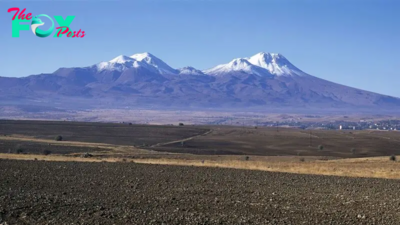Science
'Severe' geomagnetic storm to slam Earth Thursday, with auroras possible as far south as California and Alabama
An enormous mass of charged solar particles will slam into our planet Thursday (Oct. 10), likely triggering a "severe" G4-class geomagnetic storm, according to an alert from the National Oceanic and Atmospheric Administration's (NOAA) Space Weather Prediction Center.
Storms of this magnitude may disrupt power grids, nudge satellites off course, interfere with GPS navigation and damage "critical infrastructure technology," NOAA warns.
The geomagnetic storm will also make auroras visible at much lower latitudes than usual. According to NOAA, the northern lights "may become visible over much of the northern half of the country, and maybe as far south as Alabama to northern California" Thursday.
The solar outburst, known as a coronal mass ejection (CME), is the result of a powerful solar flare that erupted from our star on the evening of Oct. 8, according to NOAA. The flare has been categorized as an X 1.8-class solar flare, which is the strongest type of flare the sun can emit.
Solar flares occur when tangled magnetic-field lines on the sun violently snap back into place. Some flares may be accompanied by CMEs — fast-moving blobs of plasma that can take several days to reach Earth, if our planet happens to be within the firing line. Upon hitting our planet, CMEs can cause major disturbances in Earth's magnetic field known as geomagnetic storms, resulting in technological malfunctions and widespread auroras. NOAA measures geomagnetic storms on a scale of 1 to 5, with G1 storms considered "mild" and G5 storms dubbed "extreme."
Related: 32 stunning photos of auroras seen from space
There is little that individuals can do to prepare for the incoming G4 geomagnetic storm. But aurora chasers are advised to get as far away from city lights as possible for the best chance at seeing the northern lights. You don't need any special gear to see auroras, but viewing them through a phone camera can allow the colors to pop even more than they appear to the naked eye.
-

 Science1d ago
Science1d agoInside Capitol Hill’s Latest UFO Hearings
-

 Science1d ago
Science1d agoYou Won’t Want to Miss the Leonid Meteor Shower. Here’s How and When You Can See It
-

 Science2d ago
Science2d agoHere’s What Trump’s Win Means for NASA
-

 Science5d ago
Science5d agoWhy Risky Wildfire Zones Have Been Increasing Around the World
-

 Science5d ago
Science5d agoIt’s Time to Redefine What a Megafire Is in the Climate Change Era
-

 Science1w ago
Science1w ago4 Astronauts Return to Earth After Being Delayed by Boeing’s Capsule Trouble and Hurricane Milton
-

 Science1w ago
Science1w agoThe Elegance and Awkwardness of NASA’s New Moon Suit, Designed by Axiom and Prada
-

 Science1w ago
Science1w agoSpaceX Launches Its Mega Starship Rocket. This Time, Mechanical Arms Catch It at Landing



























